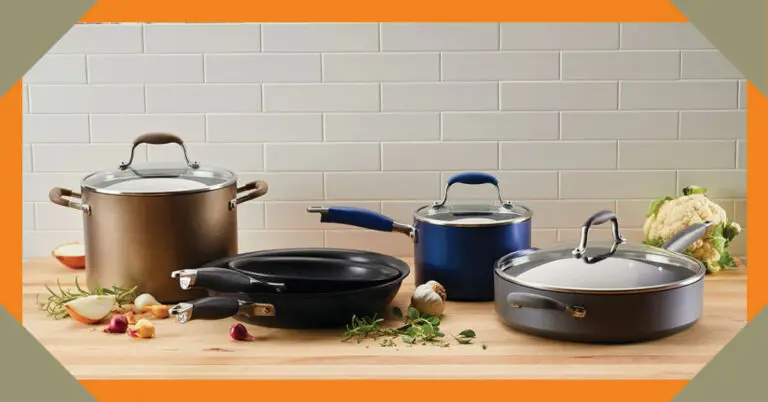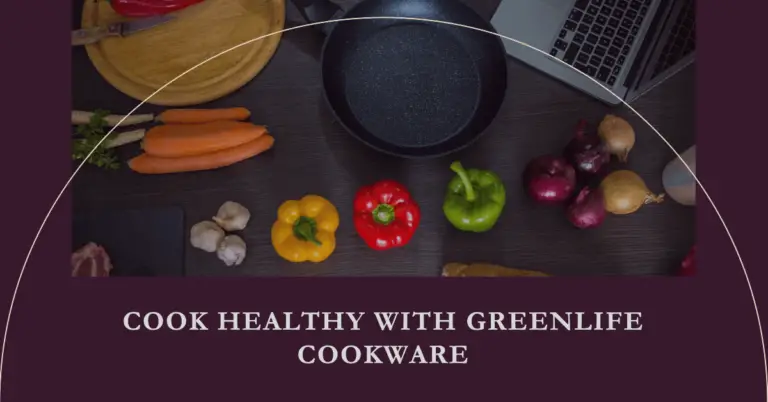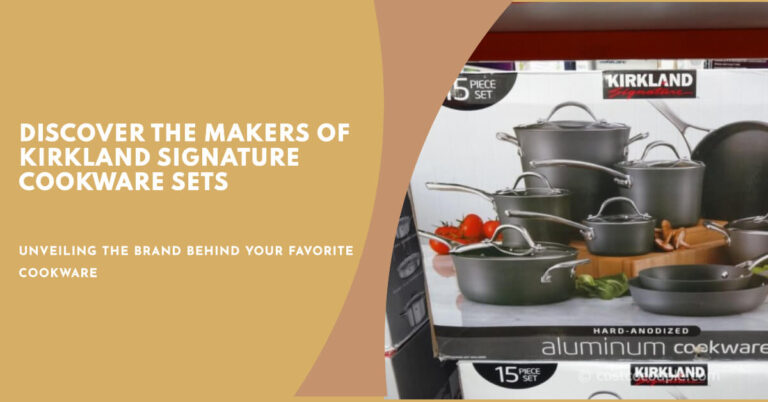Is Mirro Cookware Safe? The Complete Guide on Mirro Safety
Kitchen cookware is one of the most important purchases in any home. After all, we use pots and pans to cook almost all our meals. With so many options on the market, it can be tough to know which brands you can trust.
One of the biggest questions many consumers have is: is Mirro cookware safe?
The short answer is yes – Mirro cookware is generally considered safe when used properly. In this comprehensive guide, we’ll explore the various Mirro cookware lines, materials, safety concerns, and provide tips for getting the most from your Mirro pans while avoiding potential risks.
Specifically, we’ll cover:
- An overview of Mirro cookware’s history and product lines
- The safety of materials like aluminum, stainless steel, and nonstick coatings
- Mirro’s use of PTFE, PFOA and other chemicals
- Care and cleaning guidance to prevent leaching and scratching
- How Mirro cookware holds up to heat, oven use, and dishwashers
- Environmental impact and sustainability practices
- Final thoughts on the safety of nonstick vs stainless steel Mirro cookware
So if you’ve been wondering “is my Mirro cookware toxic?” or “is Mirro oven safe?” keep reading to get the full scoop.
An Overview of Mirro Cookware’s History and Product Lines
With 90 years of experience making cookware, Mirro is one of the most established names in the kitchen. Founded in 1932, the American company pioneered the pressure cooker and introduced aluminum cookware to the mainstream.
Today, Mirro sells various product lines:
- Aluminum: Mirro’s original cookware made from lightweight pure aluminum or aluminum mixed with stainless steel or copper. Known for even heating.
- Stainless Steel: Pots and pans made from stainless steel with an aluminum or copper core. More durable than aluminum.
- Nonstick: The nonstick collection features aluminum cookware coated in Teflon or ceramic.
- Copper: High-end pans with a copper exterior and stainless steel interior for fast, even heating.
- Cast Iron: Classic cast iron skillets and pots that can withstand very high temps. Requires seasoning.
This range gives consumers plenty of choice. But with so many materials and coatings available, it raises the question: how safe is Mirro cookware really?
The Safety of Mirro’s Various Cookware Materials and Coatings
Mirro uses some of the most common cookware materials: aluminum, stainless steel, nonstick coatings, and copper. Here is a look at the safety considerations of each.
Is Aluminum Cookware Safe? Potential Risks Explained
Aluminum has gotten a bad rap when it comes to cookware. So what’s the final verdict – is aluminum safe?
There are a few potential health risks to be aware of:
Leaching: Uncoated aluminum cookware is reactive, meaning it can leach aluminum into food, especially when cooking acidic dishes like tomato sauce. This has raised concerns over excess aluminum consumption.
Alzheimer’s Link: Some older studies found a possible link between aluminum accumulation in the body and Alzheimer’s disease. However, this has not been conclusively proven.
Safe Use Tips: Avoid cooking very acidic foods in uncoated aluminum pots. Opt for anodized aluminum, which is harder and less reactive. Also hand wash instead of dishwashing to prevent pitting that leads to more leaching.
So while pure aluminum has some risks, they can be minimized with proper use. Overall, moderate aluminum exposure through cookware is considered safe by most health organizations.
Is Stainless Steel Toxic? Why It’s One of the Safest Options
Stainless steel is arguably the safest cookware material. Here’s why:
- Non-reactive: The chromium in stainless steel forms an invisible passive layer that prevents leaching and reactions with food.
- Durable: Stainless steel doesn’t chip or peel like nonstick coatings and resists denting or warping.
- Non-toxic: Unlike nonstick pans, stainless steel doesn’t contain potentially harmful coatings that can flake off into food.
- Rust-resistant: Stainless steel doesn’t rust or corrode like cast iron or carbon steel thanks to the chromium.
Stainless steel is not without downsides – it’s not as naturally non-stick and is poor at heat conduction. But when it comes to safety, stainless reigns supreme.
Teflon and PFOA: Are Nonstick Coatings Like Those Mirro Uses Safe?
When nonstick cookware first gained popularity, it was a revelation. Eggs slid right off with little oil or butter needed!
But in recent years, concerns emerged over the chemicals used to make nonstick coatings, specifically:
- PFOA: Perfluorooctanoic acid, formerly used to produce Teflon. Linked to health issues in animal studies.
- PFOS: Perfluorooctanesulfonic acid, another possible carcinogen used in nonstick coatings.
- PTFEs: Synthetic fluoropolymers like Teflon which can release toxic fumes if overheated. New generation PTFEs aim to remove PFOA.
Mirro used PFOA, PFOS, and PTFE-based Teflon for many years. But in 2015, they announced a shift to a PFOA-free ceramic nonstick coating.
So while older Mirro nonstick pans contain harmful chemicals, newer ones are safer. Just ensure any nonstick cookware you use is PFOA-free. Safe alternatives include ceramic and anodized aluminum.
Avoid overheating empty nonstick pans and throw away any that become scratched or damaged.
Is Mirro’s Use of Copper Safe? Benefits vs Considerations
Copper cookware offers excellent heat conductivity and responsiveness. But is it safe?
Pure copper can leach into food in high amounts. So copper pans are lined with stainless steel to prevent this.
As long as the lining stays intact, leaching is minimized. Avoid using copper with very acidic foods to limit corrosion to the stainless lining. Also hand wash to prevent damage over time.
Cast Iron – A Reactive Material That Can Be Safely Seasoned
Cast iron is reactive like aluminum so it can leach iron, especially when new. But with proper seasoning, an inert layer forms preventing iron from transferring.
The main safety concern with cast iron (like nonstick pans) is chipping if overheated or dropped. Properly seasoning and caring for cast iron makes it very safe for cooking.
So in summary, stainless steel and ceramic nonstick are generally the safest Mirro cookware options. Aluminum and copper come with more usage precautions. And cast iron/nonstick coatings require seasoning and care to prevent leaching.
Next let’s look specifically at how Mirro cookware holds up to everyday cooking.
Is Mirro Oven and Dishwasher Safe? Effect of Heat, Scrubbing, and More
Mirro cookware varies when it comes to what temperatures it can withstand and whether it can be cleaned in the dishwasher.
Here are some general oven and dishwasher safety guidelines for Mirro pans:
- Aluminum: Oven safe up to 350°F. Not dishwasher safe as this can warp pans and cause pitting.
- Stainless Steel: Can withstand very high oven temps 500°+F. Dishwasher safe.
- Nonstick: Usually oven safe to 350-400°F. Hand wash only to prevent scratching.
- Copper: Often not suitable for direct oven use due to potential for overheating. Dishwasher safe but hand washing recommended.
- Cast Iron: Withstands extremely high oven temps. Not dishwasher safe (will rust).
So stainless steel Mirro cookware is the most durable when it comes to high heat and dishwasher use. For nonstick and copper pans, take additional care not to overheat empty cookware or the coatings can degrade and release toxic fumes.
How to Properly Care for Mirro Pots and Pans?
To get the most life and safety from your Mirro cookware, proper care and cleaning are essential. Here are some top tips:
- Hand wash nonstick, anodized aluminum, and copper pans. Dishwashing can damage the surfaces leading to leaching and scratching.
- Don’t scour. Avoid abrasive scouring pads on nonstick. Use soft sponges and cloth to prevent scratches.
- For tough stuck on food, soak pans first, then wash gently with a soft pad.
- Dry thoroughly after washing, don’t air dry. This prevents water spots that can lead to corrosion.
- With cast iron and stainless steel, tougher scrubbing is okay to remove stuck on bits.
- Season and re-season cast iron frequently to maintain the nonstick patina.
- Avoid metal utensils on nonstick surfaces. Use wood, silicone or plastic instead.
- Don’t stack items inside pots and pans during storage to prevent scratching.
Following these tips will keep your Mirro cookware performing like new for years to come!
Is Mirro Considered Environmentally Friendly?
Many consumers today care about buying eco-friendly products with ethical and sustainable practices. So how does Mirro stack up?
Here are some of Mirro’s positive environmental initiatives:
- Sustainability reporting: Mirro releases sustainability reports and commitments.
- Recycled aluminum: Some Mirro cookware uses 80-100% recycled aluminum.
- Energy reduction: Mirro has implemented energy, water, and waste reduction programs in manufacturing.
However, there are still some concerns to note:
- Teflon pollution: PTFE manufacturing emits greenhouse gases like carbon dioxide and fluorocarbons.
- Aluminum mining: Bauxite mining for aluminum impacts local ecosystems and water tables.
- Non-recyclable: Multi-material pots with nonstick coatings are often hard to recycle.
So while Mirro is taking steps around sustainability, their use of materials like Teflon and aluminum does have larger environmental impacts to consider as well.
FAQs – Your Top Mirro Cookware Safety Questions Answered
Let’s review some of the top frequently asked safety questions when it comes to Mirro pots and pans:
Is older Mirro cookware safe?
Older aluminum and nonstick Mirro cookware is more likely to leach metals and contain harmful PTFE/PFOAs. Use with caution or replace with newer models.
Can you use metal utensils on Mirro cookware?
Never use metal utensils on nonstick Mirro pans. With other materials, use caution as metal can still scratch and damage over time.
Is it safe to use Mirro pots and pans on the stove?
Yes, Mirro cookware is safe for stovetop cooking. Use low-to-medium heat for nonstick pans and proper burner size. Avoid leaving empty pans on the burner.
Can you put Mirro cookware in the oven?
Some Mirro pans are oven-safe up to 350°F or higher. Check labels to confirm. Do not put nonstick or copper pans in the oven.
Is it safe to cook tomatoes or acidic foods in Mirro cookware?
Stainless steel or anodized aluminum are best for cooking acidic ingredients. With aluminum and copper, limit cooking times with acidic foods as they are more reactive.
Can you put Mirro pots and pans in the dishwasher?
Stainless steel Mirro cookware is dishwasher safe. Hand wash other materials.
Do you have to season Mirro cast iron cookware?
Yes, seasoning is recommended for Mirro cast iron pans to prevent rusting and metallic tastes. Avoid soap and scrubbing when cleaning.
Does Mirro cookware contain lead or cadmium?
Mirro states their cookware is free from lead, cadmium, PFOAs, and other harmful chemicals. Newer ceramic nonstick lines eliminate these concerns.
Is polished vs brushed stainless steel Mirro cookware safer?
Both provide similar safety. Brushed finishes can hide scratches better while polished makes cleaning easier. Performance is comparable.
The Bottom Line: Is Nonstick or Stainless Steel Cookware Safer?
In the battle of Mirro nonstick vs stainless steel cookware, which comes out on top safety-wise?
The verdict: stainless steel is the safest Mirro cookware overall.
Stainless steel is non-reactive, won’t leach chemicals, resists warping, and has no coating to scratch or flake off. It’s suitable for all cooking tasks and dishwasher safe.
That said, newer PFOA-free ceramic nonstick Mirro pans provide good convenience and safety IF you avoid overheating and only use soft utensils. Other safer nonstick alternatives are anodized aluminum and titanium.
For optimal safety, pair a stainless steel skillet or saute pan with a ceramic nonstick pot for less sticking with delicate foods. Avoid older Teflon nonstick pans altogether when possible.
And be sure to use and care for any Mirro cookware properly: at moderate heat, no metal utensils, gentle scrubbing, thorough drying, and with burner size in mind.
While no cookware is perfectly risk-free, selecting the right materials for your cooking needs goes a long way. Thanks to their shift away from certain chemicals in newer products, Mirro remains one of the most trusted names in safe, reliable cookware.
I hope this guide has thoroughly answered your question “is Mirro cookware safe?” If in doubt, reach out to Mirro directly with any product questions or concerns.
Happy and healthy cooking!




